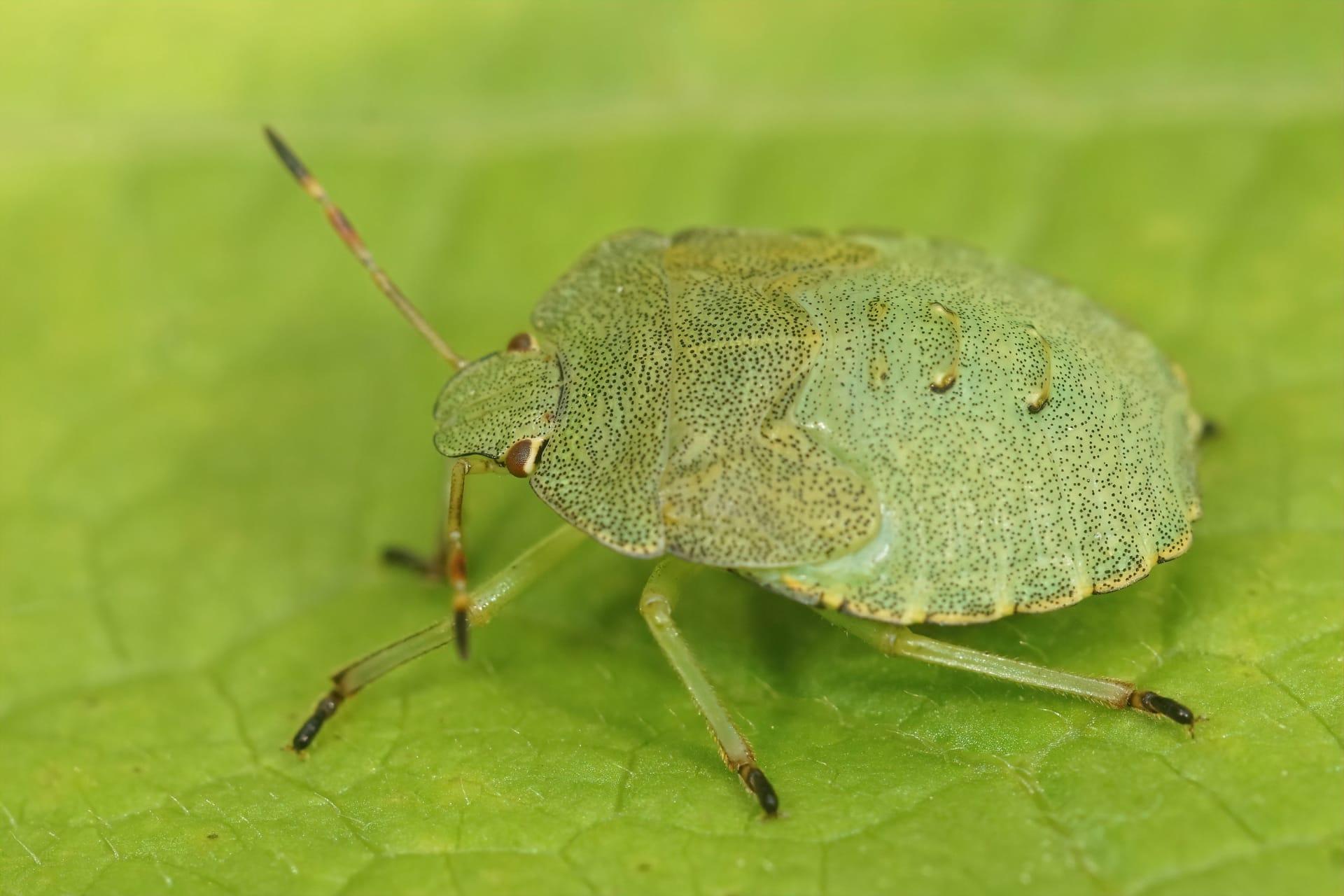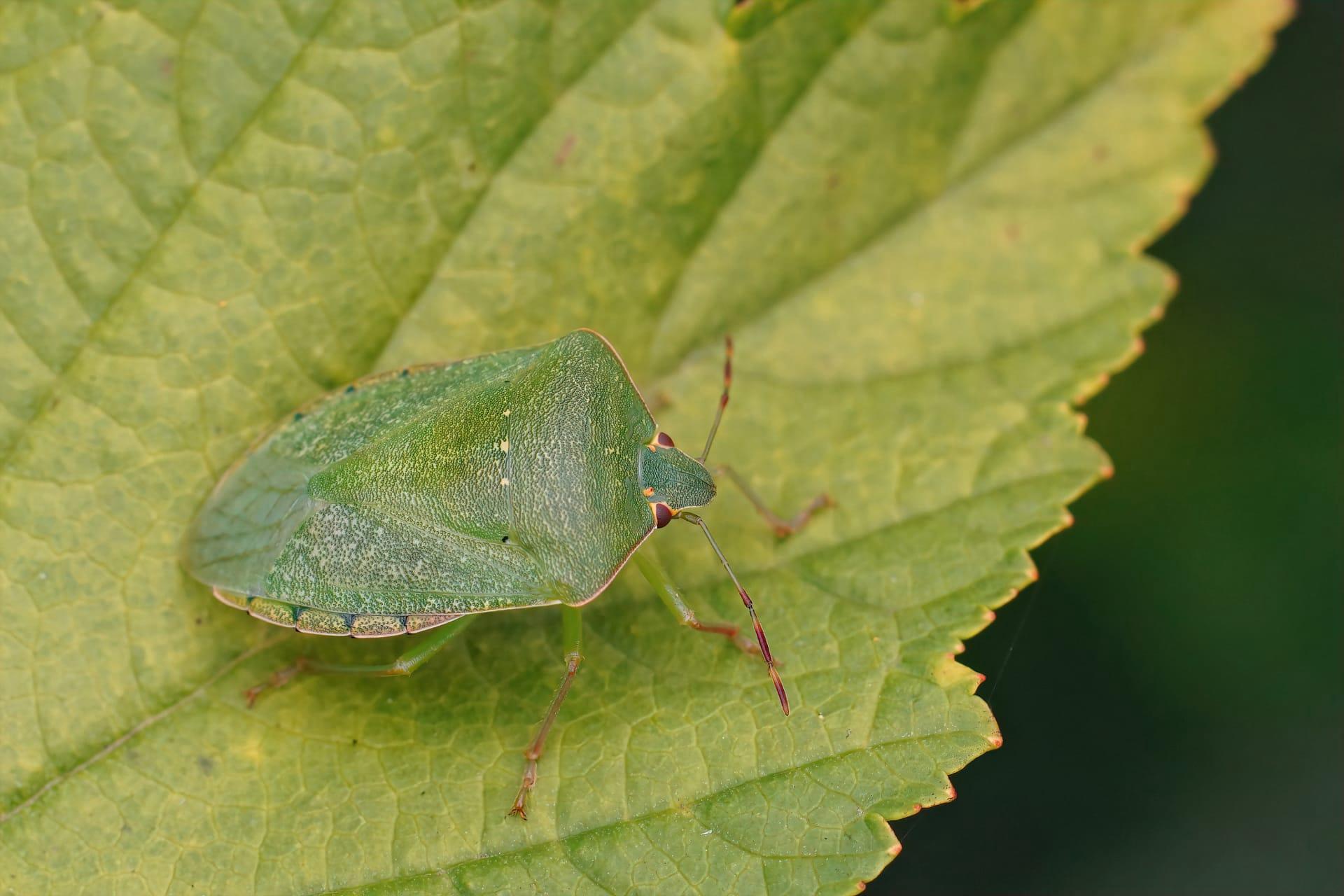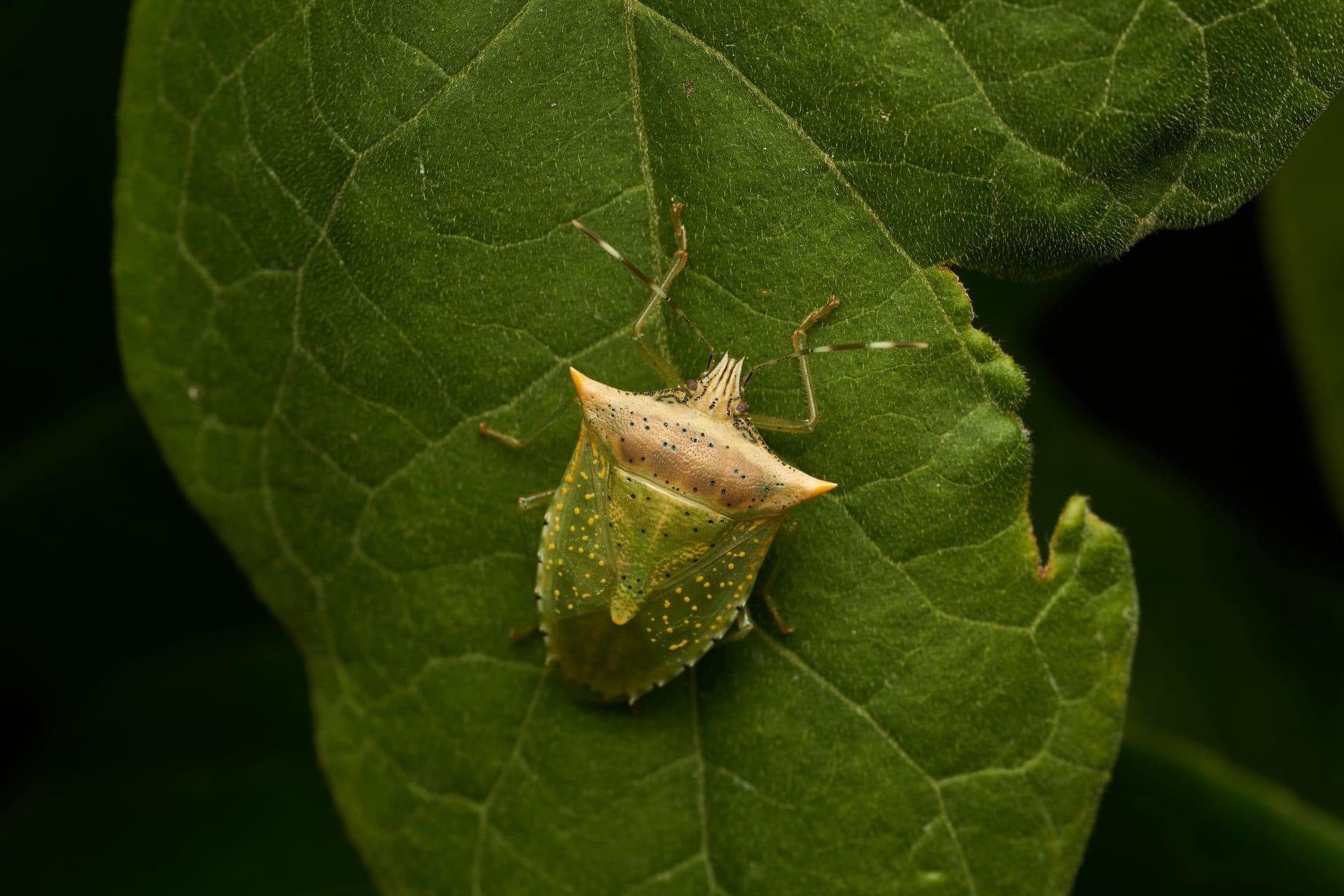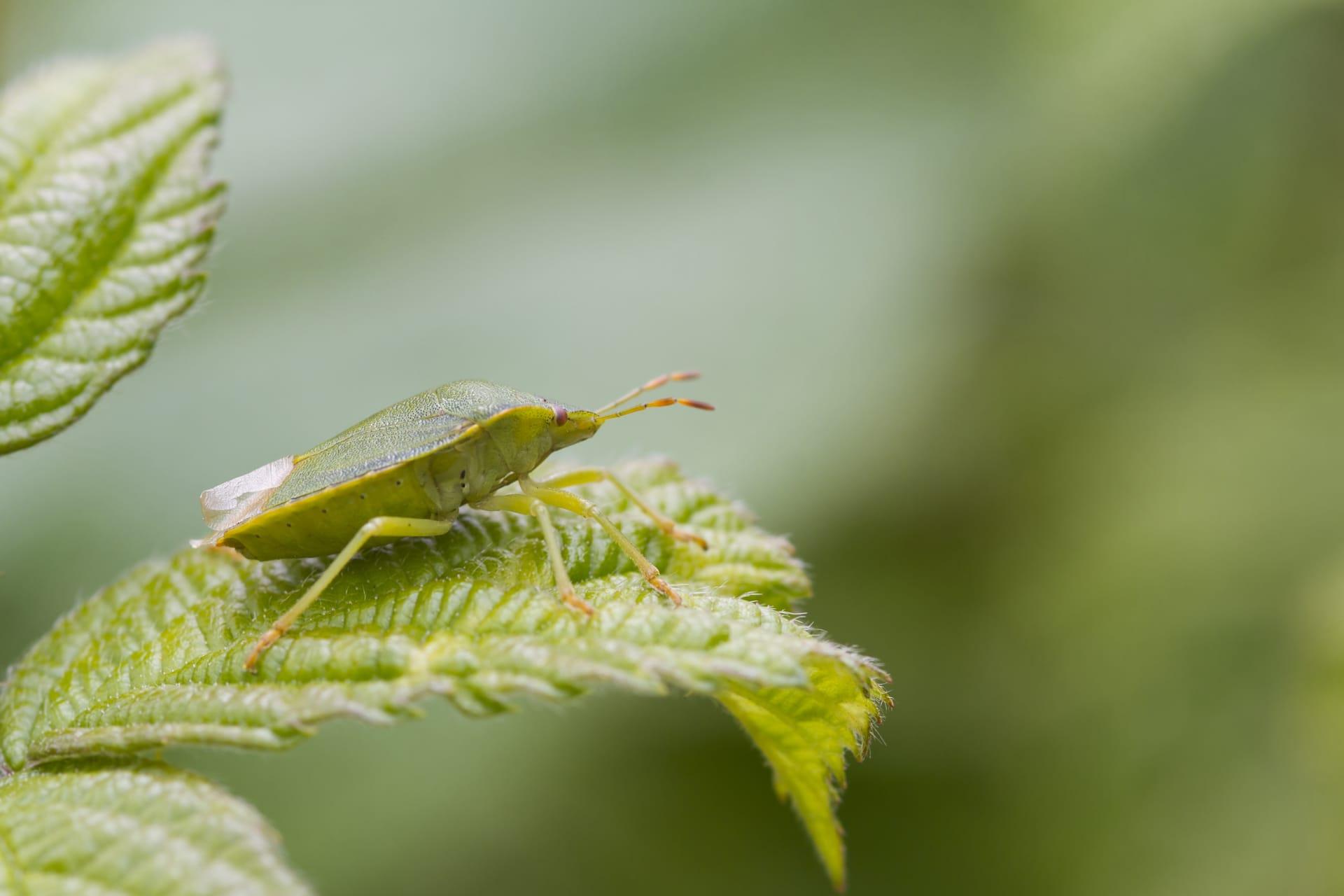1
Green Shield Bugs, known for their distinctive green color, are fascinating creatures. One interesting fact about them is their ability to change color throughout their life. Young nymphs start with a bright green hue, which gradually darkens as they mature. This color shift is not just for show; it plays a crucial role in their survival, helping them blend into different environments as they grow. The green color primarily comes from a pigment called lutein, commonly found in leafy greens, which they consume. This pigment absorption is a remarkable example of how their diet directly influences their appearance. Adult Green Shield Bugs typically reach a size of about 12 to 15 millimeters in length, with a shield-like shape that gives them their name.
Another intriguing aspect of Green Shield Bugs is their "stink" defense mechanism. When threatened, they release a pungent odor from glands located on the underside of their thorax. This smell, often described as a strong, cilantro-like odor, is a deterrent against predators such as birds and lizards. The chemical composition of this odor includes aldehydes and alcohols, which are effective in repelling potential threats. This defense mechanism is not only a fascinating survival strategy but also a significant factor in the bug's interaction with its ecosystem, influencing its relationships with predators and other species.

2
The reproductive behavior of Green Shield Bugs is quite unique. Females lay clusters of eggs, typically ranging from 25 to 30, on the underside of leaves. What's interesting is the varied color of these eggs; they can range from a pale white to a deep, almost black hue. This color variation is thought to be an evolutionary adaptation to protect the eggs from predators by camouflaging them against different backgrounds. The incubation period for these eggs is approximately two weeks, after which nymphs emerge. These nymphs go through five instar stages before reaching maturity, shedding their exoskeleton each time to grow.
Green Shield Bugs are also known for their "aggregation" behavior, especially during colder months. They tend to gather in large numbers in crevices, under tree bark, or even inside human homes to overwinter. This behavior is not just a random congregation; it's a survival tactic. By clustering together, they reduce their individual exposure to cold temperatures and increase their chances of surviving through the winter. This aggregation can sometimes lead to them being considered pests in homes, but it's a fascinating display of their communal survival instinct.

3
Diet is a crucial aspect of the Green Shield Bug's life. They are primarily herbivorous, feeding on a wide variety of plants, including trees, shrubs, and flowering plants. Their mouthparts are designed for piercing and sucking, allowing them to extract sap and other plant fluids. This feeding method can sometimes cause damage to garden plants, as the bugs drain nutrients from the leaves, leading to discoloration and sometimes even the death of the plant. However, their diet also plays a vital role in the ecosystem, as they help in controlling the growth of certain plant species, thereby maintaining ecological balance.
Another remarkable fact about Green Shield Bugs is their ability to survive in various climates. Originally native to parts of Europe, Asia, and Africa, they have adapted to a wide range of environments, from temperate to tropical regions. This adaptability is a testament to their resilience and evolutionary success. It also makes them a subject of interest for scientists studying climate adaptability in insects. Their ability to thrive in different habitats is linked to their flexible diet and reproductive strategies, which allow them to establish populations in diverse ecological settings.

4
The sensory perception of Green Shield Bugs is another area of interest. They have compound eyes that provide them with a broad field of vision, crucial for detecting predators and finding food sources. Additionally, they possess antennae that are sensitive to both touch and smell. These antennae play a vital role in their survival, helping them navigate their environment, find mates, and locate suitable feeding sites. The combination of visual and olfactory senses makes them adept at responding to changes in their surroundings and is a key factor in their ability to thrive in various habitats.
Green Shield Bugs also play a role in the food chain. While they feed on plants, they are also prey for many other species, including birds, spiders, and small mammals. This dual role makes them an integral part of their ecosystems, contributing to both plant health and serving as a food source for predators. Their presence in an environment indicates a healthy, functioning ecosystem, as they are indicators of both plant diversity and predator-prey dynamics. This ecological significance underscores the importance of understanding and preserving these insects, despite their occasional status as garden pests.

5
Communication among Green Shield Bugs is primarily through chemical signals. Apart from their defensive odor, they release pheromones to attract mates. These pheromones are specific chemical compounds that signal their readiness to reproduce, playing a crucial role in ensuring the continuation of their species. The effectiveness of these chemical signals in attracting mates over distances is a fascinating aspect of their reproductive behavior and highlights the importance of chemical communication in the insect world.
The impact of Green Shield Bugs on agriculture is a topic of considerable interest. While they are not typically considered major pests, they can cause damage to crops such as beans, peas, and various fruits by feeding on them. This feeding results in blemishes and sometimes reduced crop yield. However, their impact is usually minimal compared to other agricultural pests. In some cases, Green Shield Bugs are even beneficial, as they feed on weeds and other unwanted plants, contributing to weed control in certain agricultural settings. Their relationship with agriculture exemplifies the complex interactions between insects and human activities, illustrating the delicate balance in managing ecosystems for agricultural productivity.